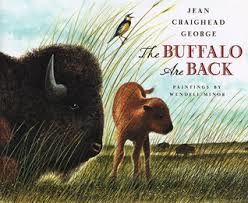Posted in: Aha! Blog > Wit & Wisdom Blog > Fine Art > How Can You Engage All Learners and Boost Literacy?
When it comes to teaching English Language Arts, so much has changed over the years—the Common Core State Standards, rigorous assessments, and more diverse classrooms, just to name a few. Still one thing has remained the same: student engagement is a critical key to academic achievement—especially when it comes to literacy.
But how do you meet the rigor demands of the new standards? How do you meet the needs of every student? How do you set all students up for success? Sarah Woodard, Wit & Wisdom® teacher–writer, provides insights into four key instructional strategies from Great Minds® to engage all learners, which you can implement in your ELA classroom right away.
1. Give students access to great content.
I’ve seen firsthand the difference it makes when you put rich, engaging content in front of students. Imagine the possibilities in your classroom if every student was actively engaged and excited about reading.
No, this isn’t a dream world that I’m living in. Students’ interest is captured by rich texts and interesting content that makes them want to come to class and engage.
Mandy Polen, Instructional Reading Coach for a school district in the Dayton region of Ohio, recently shared with me a story of a second-grade student in one of her district’s schools. The student was so engaged in the text her class was reading—The Buffalo Are Back, featured in the module The American West—that she was devastated when she had to miss two days of school. She was worried she would miss the ending of the story, and when she returned she couldn’t wait to find out, “How did the story end? What happened to the buffalo?”

The level of engagement and enthusiasm for reading wasn’t singled out to just one student. Polen says, “It surprised many of our teachers how truly engaged all of the students were across the board…They [teachers] didn’t anticipate this module to be a topic students would be super engaged in.”
I challenge you to provide your students with access to great content—such as a finely crafted poem or a compelling book about American history—and see how you inspire more curiosity in those students than you would ever achieve with basals or generic worksheets. Your classroom becomes the place where students want to be. They can’t wait to get to school.
2. Spend time diving into the content.
As the second-grade class in Polen’s example continued to read The Buffalo Are Back, they were asked this essential question throughout the quarter: “What was life like in the West for early Americans?” They spent weeks studying this topic by exploring several module texts curated to build knowledge, including John Henry and The Legend of the Bluebonnet.

Polen shared with me that students took the time to read and reread the stories, examining the language and illustrations. They listened to the texts as they were read aloud by their teacher, read in peer groups, and listened to audiobook narrators. “They were able to examine multiple perspectives of key figures from that time, like the Native Americans and pioneers, while also hitting many of the standards—all from the various texts they read,” she explains.
The time spent diving deeply into these rich texts enabled students to practice fluency, introduced key vocabulary words in the texts, and ultimately built deep and sustained knowledge of the texts through close reading.
3. Ask compelling, thought-provoking questions.
After reading The Buffalo Are Back, the second-grade teacher embarked on a progression of inquiry with her students. First, she asked this curiosity-building question: "What do you notice and wonder about this book?" This question, which can be applied to any text, offers students the opportunity sit with the book and really enjoy the text as they get to know it.
All children have a natural curiosity. Asking the question “What do you notice and wonder?” invites each student—including those who may be striving readers, language learners, or advanced readers—to participate in knowledge-building. As Polen explains, these kinds of questions “level the playing field for all students.”
As students continue to study the text, they can dig more deeply by considering additional questions, such as “What’s happening in The Buffalo Are Back?” and “What is the essential meaning in this text?”
Asking questions that spark inquiry and discussion is a key instructional strategy in the ELA curriculum, Wit & Wisdom, that Polen’s district adopted in 2016 for Kindergarten through Grade 8. These reoccurring inquiry-based questions are asked each time a student engages with a new text, and help to develop habits of mind for what good readers ask themselves each time they’re introduced to a new book. When students can ask themselves a set of predictable questions, this enables them to focus on the answers and dig into difficult-to-comprehend topics, such as figurative language or the thesis of a scientific article.
4. Integrate visual art into ELA instruction.
Visual art offers all students powerful opportunities to build content knowledge and practice literacy. A universal and essential form of communication, visual art is accessible to even the youngest learners.
Just as students can notice and wonder about great literature and discuss the essential meaning, they can apply those same habits of mind to analyzing a painting, sculpture, video, or illustration. Incorporating visual art into literacy instruction is incredibly helpful for English language learners and striving readers, as it provides multiple opportunities for students to discuss what they notice and wonder about the image before them.

Through intentional exposure to great works of art, students build understanding, content knowledge, appreciation, and awareness of the ways in which the elements of visual language influence people and the world of ideas. Moreover, a student who may not be able read all the words in a text just yet can contribute to classroom discussion about a visual text based on what they see—thus developing speaking and listening skills in an authentic, engaging way.
Remember: Access, Depth, Inquiry, and Visual Art = Engaged Students
LEARN MORE
As you can tell, at Great Minds we strongly believe every child is capable of greatness, especially when they’re given access to knowledge-rich, engaging instructional materials. For a deeper dive into the learning design behind our new, K–8 ELA curriculum—Wit & Wisdom—check out our free teacher resources.
Submit the Form to Print

Sarah Woodard
Sarah Woodard is the Regional Director–West for the Humanities Implementation Success team at Great Minds. She has been a contributor to multiple Humanities resources and now supports partners with their implementations. Prior to joining Great Minds, she taught first, third, and fourth grades. For Sarah, helping educators realize their vision and goals for their students to reach higher levels of academic achievement is the most important and rewarding part of the job.
Topics: Fine Art




.jpg?width=430&name=PhD%20Science%20(1).jpg)




.jpg?width=430&name=EurekaMath%20(1).jpg)
.jpg?width=430&name=WitWisdom%20(1).jpg)

